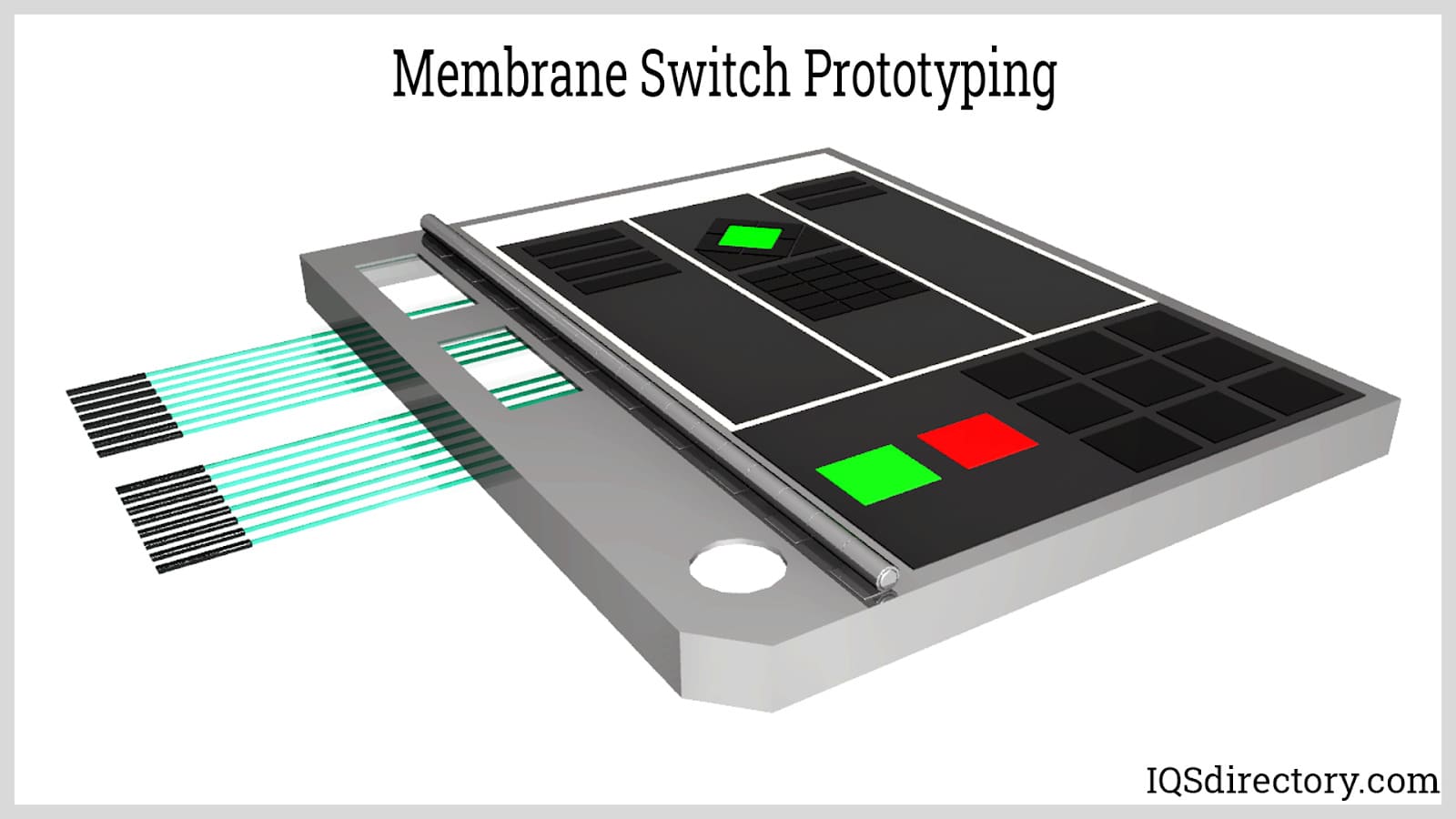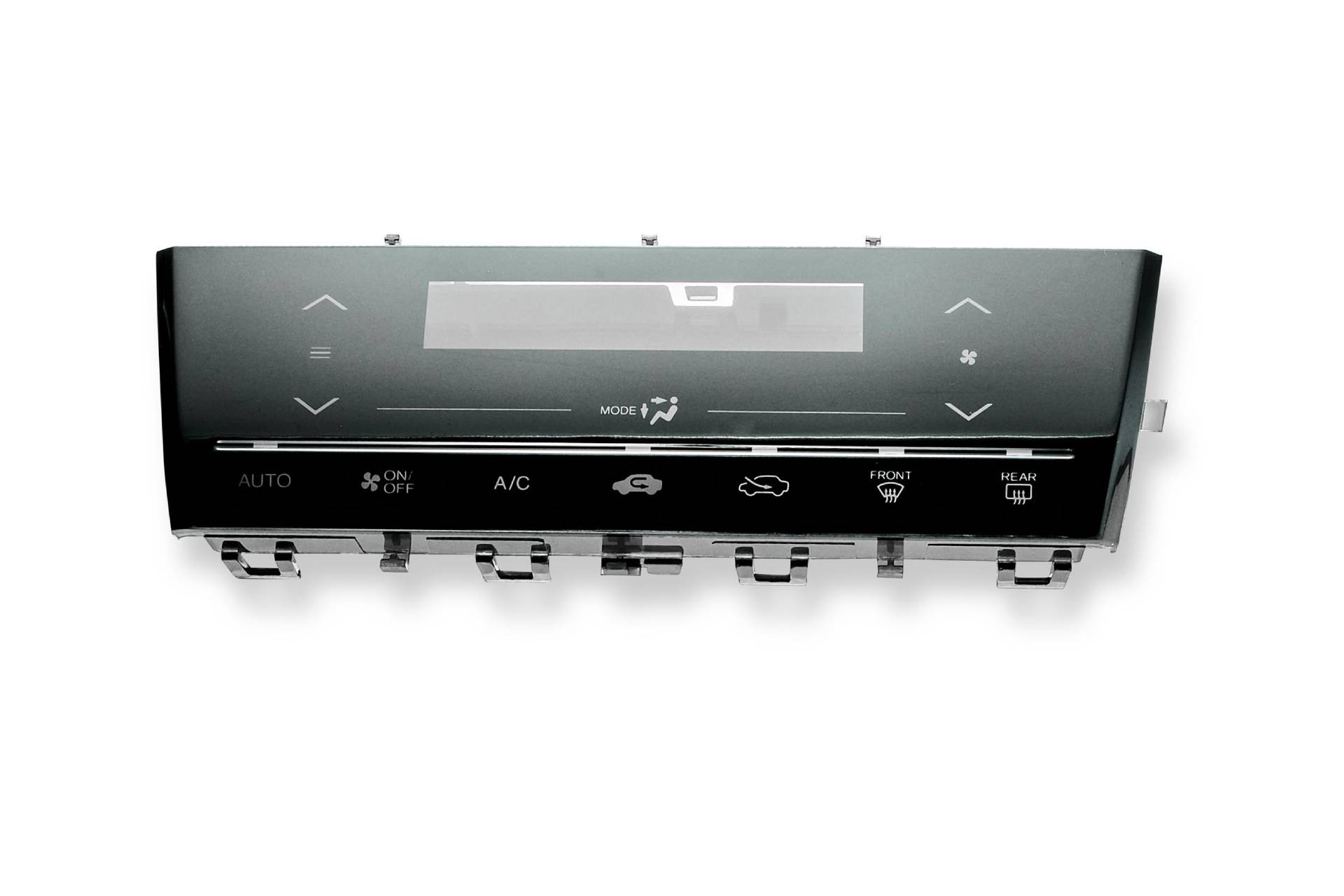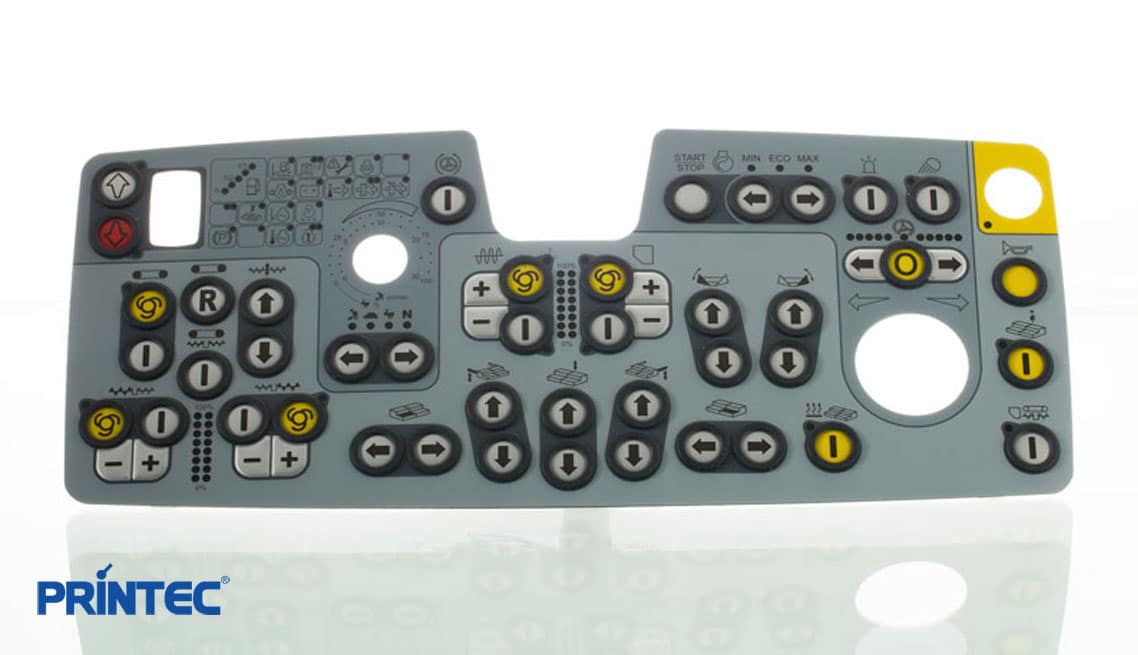If durability matters, sourcing from a reliable membrane switch manufacturer is key.
If durability matters, sourcing from a reliable membrane switch manufacturer is key.
Blog Article
Everything About Membrane Switch Over: Recognizing Its Design and Functionality
When you consider the control interfaces in contemporary gadgets, membrane layer buttons frequently come to mind. These components are more than just switches; they mix layout and performance perfectly. Understanding how they function and what makes them efficient can transform your point of view on daily electronics. However, there are nuances to their design and efficiency that you may not be aware of. Let's explore what collections membrane layer switches over aside from other control systems.
What Are Membrane Buttons?

Membrane switches can also be personalized regarding form, dimension, and graphics, permitting manufacturers to create one-of-a-kind user interfaces customized to details products. In general, membrane buttons play a significant duty in boosting customer experience throughout a large range of applications.
Exactly How Membrane Switches Over Work
When you push a secret on a membrane button, it triggers a simple yet effective device. The leading layer, typically made from flexible material, lowers onto a conductive layer underneath it. This action bridges the gap in between conductive traces, finishing an electric circuit. As soon as the circuit shuts, it sends out a signal to the gadget's controller, which translates your input.
You'll observe that the tactile feedback differs based upon the button layout, supplying either a soft click or an extra pronounced response. When you launch the key, the membrane go back to its original placement, reopening the circuit and quiting the signal. This process takes place almost instantaneously, guaranteeing a receptive individual experience.
Membrane switches are popular due to their longevity and resistance to dust and moisture, making them perfect for different applications, from household home appliances to clinical gadgets. Understanding this procedure helps you appreciate their prevalent use.
Key Components of Membrane Layer Switches
Recognizing the vital elements of membrane switches is essential for grasping their functionality and layout. The protective layer shields versus environmental aspects and put on, prolonging the switch's life expectancy. By understanding these elements, you'll obtain insight right into just how membrane changes run and their significance in various applications.
Products Utilized in Membrane Layer Switch Over Layout
The efficiency and sturdiness of membrane switches greatly depend upon the materials utilized in their design. You normally encounter polyester and polycarbonate as main substratums due to their exceptional toughness and versatility. These products withstand scratches and chemicals, making them ideal for requiring atmospheres.
The conductive layers frequently make use of silver or carbon, picked for their dependability and conductivity. membrane switch manufacturer. Silver provides superior efficiency, while carbon is a cost-effective choice. For the overlay, you could take into consideration a matte or shiny finish, depending upon your visual demands and user experience
Make particular to choose adhesives that endure ecological variables like temperature and humidity. Choosing the appropriate products will assure your membrane layer switch stands the test of time.
Design Considerations for Membrane Buttons
While designing membrane layer switches, it's important to take into account numerous factors that influence their performance and user experience. Start by focusing on the layout and switch size; make particular they're intuitive and easy to navigate.
Do not forget the graphic design; clear labeling and shade contrast are considerable for presence. Validate your layout fits ecological variables, like dampness or temperature level variants, which might affect efficiency. Keep in mind the value of testing models with real customers to collect responses and make required adjustments. This repetitive process helps you improve the style, verifying it satisfies both practical and aesthetic needs efficiently. By thoroughly thinking about these components, you'll develop a membrane button that enhances use and complete satisfaction.
Applications of Membrane Buttons
Membrane layer buttons are versatile elements found in numerous applications, from industrial tools to customer electronics. You'll see their effect in equipments that call for long lasting interfaces and in devices that take advantage of smooth styles. Recognizing these applications helps you value the performance and practicality of membrane layer buttons in day-to-day technology.
Industrial Tools Usage
When you're looking to enhance the performance of commercial devices, membrane layer switches offer a reputable service that incorporates resilience with straightforward style. These buttons are excellent for rough settings, providing resistance to dirt, dampness, and chemicals. Welcome membrane buttons to streamline your operations and improve general efficiency.
Consumer Electronic Devices Combination
In the domain name of consumer electronic devices, membrane layer buttons play a crucial function in improving customer communication and gadget functionality. You'll discover them in devices like microwaves, remote controls, and pc gaming consoles, giving a seamless method to interact with innovation. Their streamlined design enables very easy assimilation into different products, making controls instinctive and straightforward. With their ability to integrate graphics and backlighting, you can delight in a modern visual that matches the tool's general look. Membrane buttons likewise assure toughness and resistance to dirt and wetness, extending the life expectancy of your electronic devices. By picking membrane layer switches, you improve not just the performance navigate to these guys however likewise the design of your devices, making daily communications smooth and delightful.
Advantages and Drawbacks of Membrane Layer Switches
While membrane buttons provide a series of advantages, they also feature some drawbacks that you should consider. One significant advantage is their small design, making them ideal for space-constrained applications. They're additionally affordable, offering a resilient remedy with a low manufacturing price. On top of that, their seamless surface is very easy to tidy, enhancing hygiene in environments like medical facilities.

Nonetheless, there are drawbacks. Membrane layer switches can have a much shorter life-span compared to mechanical switches, specifically under heavy use. They can also be much less responsive, which could influence user feedback throughout operation. In addition, if damaged, repairing them can be difficult and commonly requires full replacement. Eventually, their level of sensitivity to get redirected here severe temperatures and ecological conditions may limit their efficiency in particular settings. Stabilizing these pros and disadvantages will help you establish if membrane buttons you can find out more are the right fit for your task.
Frequently Asked Questions
For How Long Do Membrane Layer Switches Over Commonly Last?
Membrane switches over typically last between 5 to 10 years, relying on usage and environmental problems. You'll want to evaluate factors like wear, direct exposure to moisture, and temperature variations to gauge their durability properly.
Can Membrane Layer Changes Be Customized for Specific Designs?
Yes, you can tailor membrane layer switches to fit particular styles (membrane switch manufacturer). You'll have the flexibility to select colors, shapes, and formats that match your task's needs, ensuring they mix seamlessly with your total visual
What Is the Price Range for Membrane Layer Switch Over Production?
The expense range for membrane switch production typically drops between $1 and $10 each, depending on factors like style intricacy, amount, and materials. You can obtain quotes from makers to find the most effective alternative.

Are Membrane Layer Changes Water Resistant or Resistant?
Membrane switches can be made to be water-proof or immune, depending upon products used and construction techniques. If you require them for damp environments, guarantee you specify those demands during the style procedure.
How Do Membrane Layer Changes Contrast to Standard Switches?
Membrane layer buttons are typically thinner and extra versatile than traditional buttons, providing a sleek design. They're often less complicated to clean and incorporate, but could not give the tactile feedback you're used to with mechanical alternatives.
Verdict

Report this page